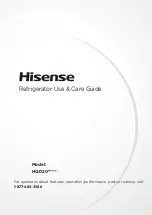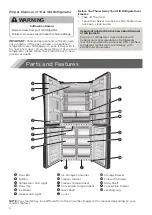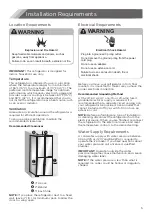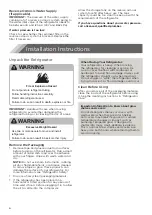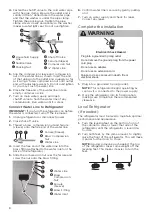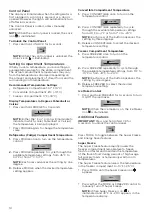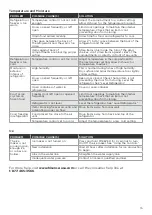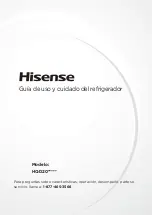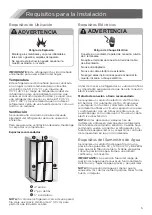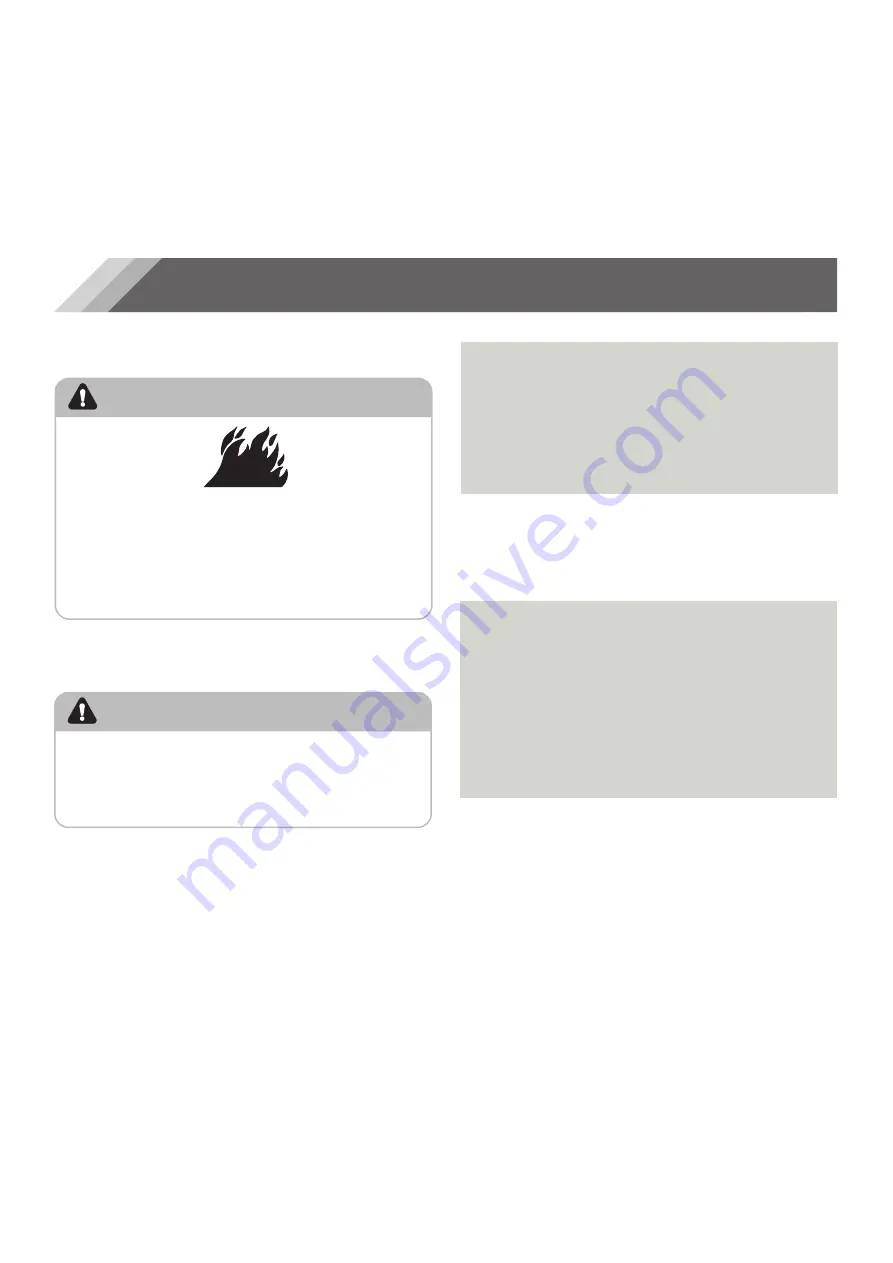
6
Reverse Osmosis Water Supply
(if applicable)
IMPORTANT:
The pressure of the water supply
coming out of a reverse osmosis system going to
the water inlet valve of the refrigerator needs to
be between 30 and 125 psi (207 and 862 kPa).
If water pressure is too low:
Check to see whether the sediment filter in the
reverse osmosis system is blocked. Replace the
filter if necessary.
Allow the storage tank on the reverse osmosis
system to refill after heavy use. The tank
capacity could be too small to keep up with the
requirements of the refrigerator.
If you have questions about your water pressure,
call a licensed, qualified plumber.
Installation Instructions
Unpack the Refrigerator
WARNING
Fire or Explosion Hazard
Do not puncture refrigerant tubing.
Follow handling instructions carefully.
Flammable refrigerant used.
Failure to do so can result in death, explosion or fire.
IMPORTANT:
Handle with care when moving
refrigerator to avoid either damaging the
refrigerant tubing or increasing the risk of a leak.
WARNING
Excessive Weight Hazard
Use two or more people to move and install
refrigerator.
Failure to do so can result in back or other injury.
Remove the Packaging
•
Remove tape and glue residue from surfaces
before turning on the refrigerator. Rub a small
amount of liquid dish soap over the adhesive
with your fingers. Wipe with warm water and
dry.
NOTE:
Do not use sharp instruments, rubbing
alcohol, flammable fluids, or abrasive cleaners
to remove tape or glue. These products can
damage the surface of your refrigerator. For
more information, see “Refrigerator Safety.”
•
Dispose of/recycle all packaging materials.
•
If the refrigerator has been placed in a
horizontal or tilted position for any period of
time wait 4 hours before plugging it in to allow
the oil to settle into the compressor.
When Moving Your Refrigerator:
Your refrigerator is heavy. When moving
the refrigerator for cleaning or service, be
sure to cover the floor with cardboard or
hardboard to avoid floor damage. Always pull
the refrigerator straight out when moving it.
Do not wiggle or “walk” the refrigerator when
trying to move it, as floor damage could occur.
Clean Before Using
After you remove all of the packaging materials,
clean the inside of the refrigerator before using
it. See the cleaning instructions in “Refrigerator
Care.”
Important information to know about glass
shelves and covers:
Do not clean glass shelves or covers with
warm water when they are cold. Shelves
and covers may break if exposed to sudden
temperature changes or impact, such as
bumping. Tempered glass is designed to
shatter into many small, pebble-size pieces.
This is normal. Glass shelves and covers are
heavy. Use both hands when removing them to
avoid dropping.

